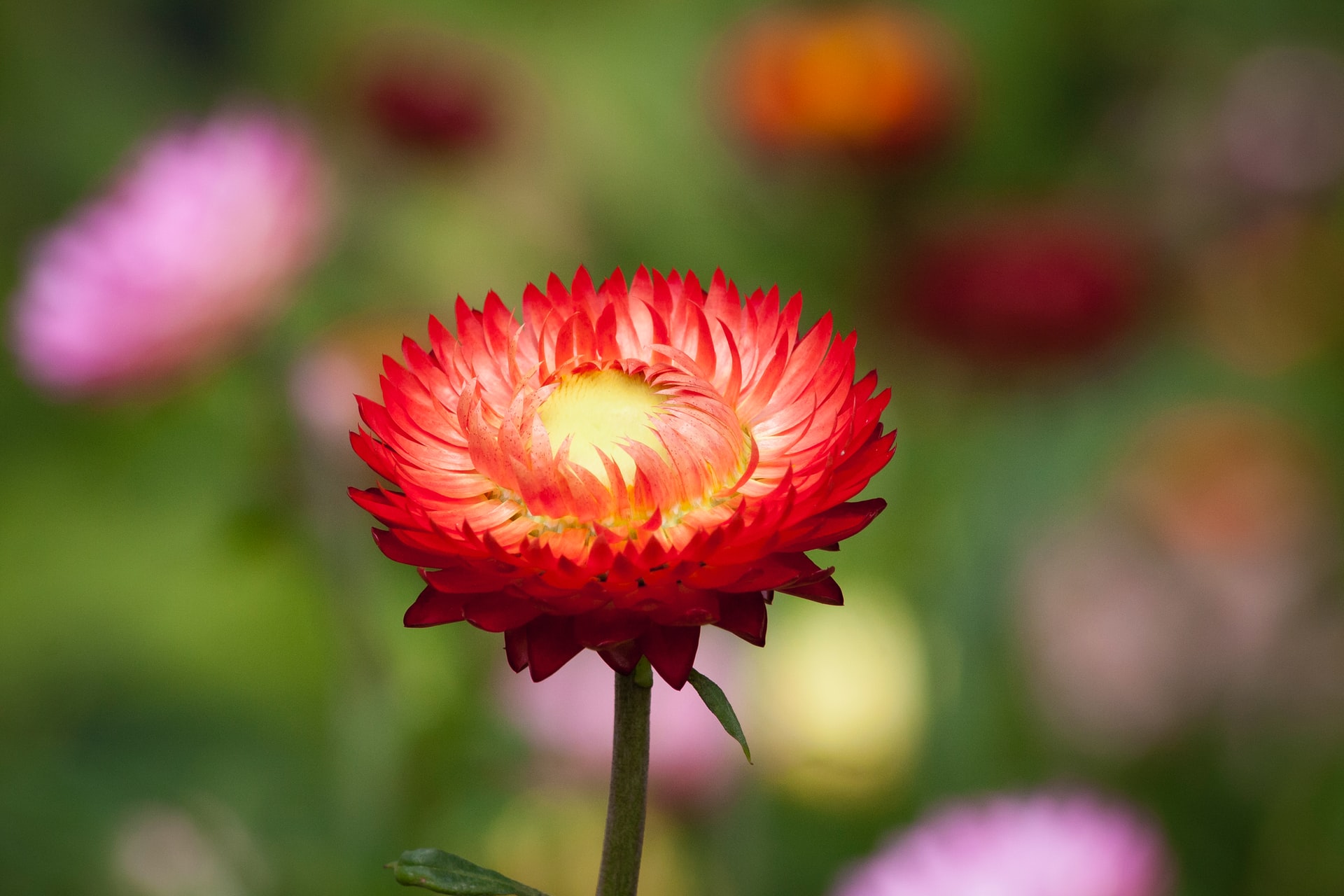We’ve all head the word “flourish.” What does flourishing actually mean and how can we apply it to our lives?
Flourishing, as defined by the Merriam-Webster dictionary, is “a period of thriving” or “a luxuriant growth or profusion.” When applied to human lives, flourishing exemplifies optimal well-being. Rather than focusing on the cessation of suffering, it shines the light on the positive psychological elements that lead to a life of satisfaction and well-being.
According to Martin Seligman, the founder of positive psychology and author of the book Flourishing, flourishing is a multi-dimensional concept comprised of five elements related to well-being. The concept acknowledges that, while happiness is an important ingredient in life satisfaction, true well-being is broader and holistic. To truly flourish, we need to cultivate and maintain each of the independent pieces that contribute to the whole – positive emotion, engagement, meaning, positive relationships, and accomplishment. (Some have made the case that this list is incomplete.)
Let’s look at each.
- Positive emotions are experienced when we feel joy, excitement, interest, hope, or gratitude, among other emotions. Ask yourself: To what extent do I feel contented?
-
Engagement is a way of being involved with tasks that includes interest, curiosity, and absorption. Ask yourself: To what extent am I immersed in pursuing goals and doing activities I enjoy?
-
Meaning involves serving something that is bigger than oneself. Ask yourself: To what extent do my activities contribute to something valuable and worthwhile?
-
Positive relationships are supportive relationships built on trust and respect. Ask yourself: To what extent do I feel supported by my important relationships?
-
Accomplishment is the successful completion of a task or goal. Ask yourself: To what extent do I make progress toward my goals, daily or longer-term?
Mindfulness can play an important supporting role on the path to flourishing. Mindfulness – essentially, awareness or attention to present experience – brings light to our perceptual mental habits and knee-jerk behavioral responses, paving the road to the end of automaticity. When we have awareness of our limiting thoughts and behaviors, we can choose whether or not we engage with them or take another path. And one option is the path to flourishing.

Here are some ways to mindfully cultivate the elements that, together, lead to flourishing.
Generate positive emotion.
We can generate positive emotions by bringing to mind a positive memory or creating a new positive experience. And it need not take long. Try it now... Bring to mind someone you appreciate. Consider what that person has given you, and notice the feelings of thankfulness. Let those feelings sink in through a few breath cycles… 1… 2… 3... You can also give thanks for the feelings you just generated.
Get engaged.
Engagement describes a specific way of being involved in activity – immersed and fully present. We’re engaged when we are completely focused on what we’re doing to the extent that we lose track of time. In other words, being mindful in the moment. With minds that tend to ruminate about the past or predict the future, we can bring ourselves to the present by enlisting our senses. Take a moment… and direct your attention to your hands (Rick Hanson’s suggestion in Just One Thing). What are they doing? And what are they sensing? They are always touching something, even if only the air around them. What does that feel like? Notice your hands throughout the day, and relish in the notion that your hands offer a gateway to the moment.
Consider meaning.
When we get wrapped up in an activity or project, we often forget to consider the larger context – the reason we’re doing what we’re doing. How it matters. Doug Silsbee, author of Presence-Based Coaching, considers purpose as an inner compass needle that orients us in life. He suggests connecting an activity to a larger purpose by asking, For the sake of what am I doing this? In other words, Why does this matter? Then enjoy the motivation that comes from it.
Cultivate positive relationships.
Most of life’s rewards are experienced in the company of others. In fact, it is the formation of the hive that has allowed humans to survive throughout human evolution. And the capacity for “hive emotions” such as love, compassion, kindness, teamwork are reflected in our brain structure. Cultivating positive relationships enriches our own life story and fulfills a basic human need to belong. Martin Seligman suggests strengthening relationships through random acts of kindness. You can practice this by finding an unexpected kind thing to do for someone else and simply doing it without desiring anything in return. And, as a bonus, you’ll elevate your own mood.
Notice your accomplishments.
Most of us accomplish a multitude of things every day. We may just not be thinking of our tasks and projects as deliberate goals that can achieved (with success!). According to Rick Hanson (author of Resilient), a durable sense of being successful is built from internalizing many experiences of small successes. And because our lives are inherently goal-directed (We all got out of bed this morning, didn’t we?), there is an ever-replenishing reservoir of opportunities for success. Consider small goals you’ve already achieved today, like making a phone call you’ve been putting off or preparing food for your kids. Then ask yourself how they are related to something bigger, such as providing for your family. Also notice your effort toward ongoing goals, such as being more patient or taking time to relax. Allow yourself the feeling of accomplishment and savor it for a few breath cycles.
Part of flourishing is understading what is it and how to achieve it. Wishing you success on your path.


0 Comments